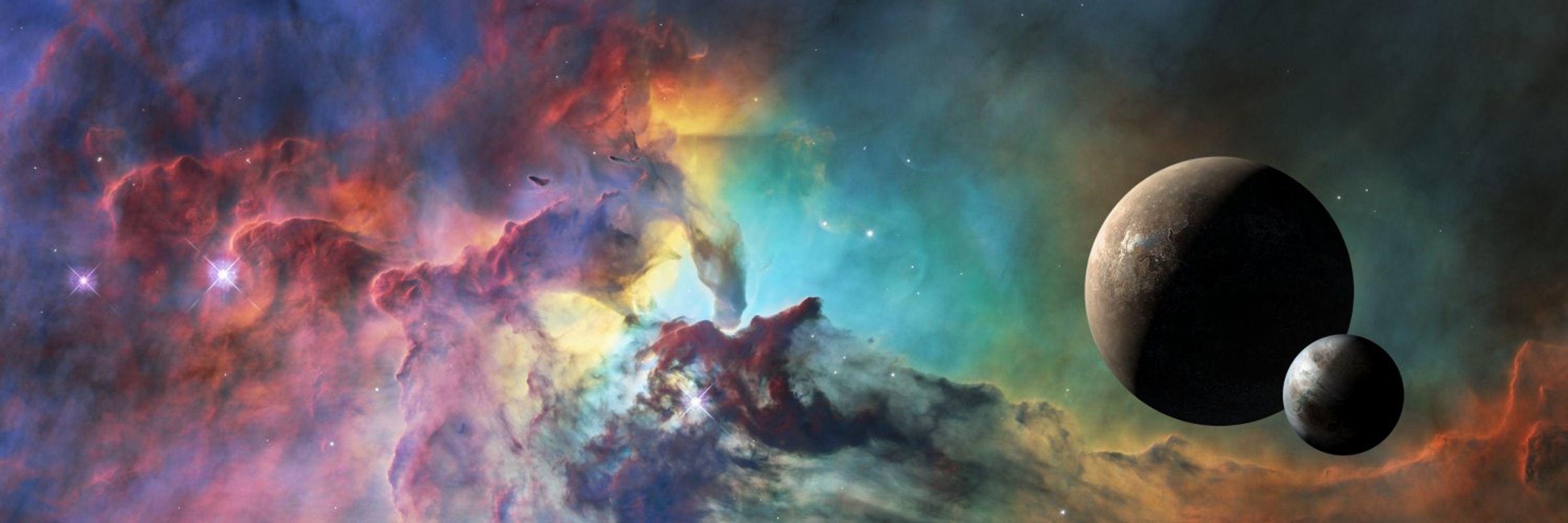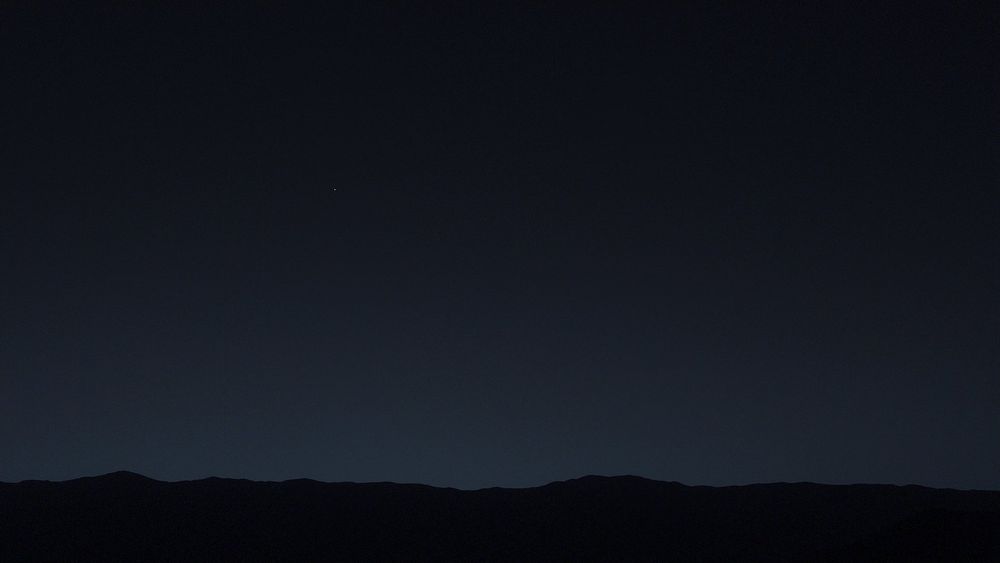

It looks like Venus, shining brightly in the twilight sky.
But it's us.
It's Earth.
From Mars.
Wanna see what it looks like to fly past your home planet?
THEN LOOK AT THIS
This is the OSIRIS-APEX spacecraft's view as it swung by Earth on Tuesday, 23 September 2025 from an altitude of 3,500 km.
Look how beautiful that big blue marble is ❤️
Wanna see what it looks like to fly past your home planet?
THEN LOOK AT THIS
This is the OSIRIS-APEX spacecraft's view as it swung by Earth on Tuesday, 23 September 2025 from an altitude of 3,500 km.
Look how beautiful that big blue marble is ❤️
www.washingtonpost.com/world/2025/1...

Wanna see what it looks like to fly past your home planet?
THEN LOOK AT THIS
This is the OSIRIS-APEX spacecraft's view as it swung by Earth on Tuesday, 23 September 2025 from an altitude of 3,500 km.
Look how beautiful that big blue marble is ❤️
Wanna see what it looks like to fly past your home planet?
THEN LOOK AT THIS
This is the OSIRIS-APEX spacecraft's view as it swung by Earth on Tuesday, 23 September 2025 from an altitude of 3,500 km.
Look how beautiful that big blue marble is ❤️
These are among the first images from the newly launched NASA ESCAPADE* mission—showing the port solar array from the Gold twin spacecraft in both visible light and infrared.
*Escape and Plasma Acceleration and Dynamics Explorers
(1/2)

These are among the first images from the newly launched NASA ESCAPADE* mission—showing the port solar array from the Gold twin spacecraft in both visible light and infrared.
*Escape and Plasma Acceleration and Dynamics Explorers
(1/2)
Structure within the major dust tail from the comet is clearly visible, together with two smaller jets trailing the nucleus and maybe even an anti-tail.

Structure within the major dust tail from the comet is clearly visible, together with two smaller jets trailing the nucleus and maybe even an anti-tail.
These are among the first images from the newly launched NASA ESCAPADE* mission—showing the port solar array from the Gold twin spacecraft in both visible light and infrared.
*Escape and Plasma Acceleration and Dynamics Explorers
(1/2)

These are among the first images from the newly launched NASA ESCAPADE* mission—showing the port solar array from the Gold twin spacecraft in both visible light and infrared.
*Escape and Plasma Acceleration and Dynamics Explorers
(1/2)
Structure within the major dust tail from the comet is clearly visible, together with two smaller jets trailing the nucleus and maybe even an anti-tail.

Structure within the major dust tail from the comet is clearly visible, together with two smaller jets trailing the nucleus and maybe even an anti-tail.

Saturn's giant icy moon, almost ten time farther from the Sun than Earth, and the only outer Solar System body where liquid is stable on the surface.
That liquid? Methane/ethane, because the temperature there is ‒180°C, seen here glinting in the Sun in this Cassini image.

Saturn's giant icy moon, almost ten time farther from the Sun than Earth, and the only outer Solar System body where liquid is stable on the surface.
That liquid? Methane/ethane, because the temperature there is ‒180°C, seen here glinting in the Sun in this Cassini image.


Saturn's giant icy moon, almost ten time farther from the Sun than Earth, and the only outer Solar System body where liquid is stable on the surface.
That liquid? Methane/ethane, because the temperature there is ‒180°C, seen here glinting in the Sun in this Cassini image.

Saturn's giant icy moon, almost ten time farther from the Sun than Earth, and the only outer Solar System body where liquid is stable on the surface.
That liquid? Methane/ethane, because the temperature there is ‒180°C, seen here glinting in the Sun in this Cassini image.

The moment, you own it, you better never let it go (go)
You only get one shot, do not miss your chance to blow
This opportunity comes once in a lifetime, yo
You better lose yourself in the music
The moment, you own it, you better never let it go (go)
You only—
What a good wife you would be
But my life my love and my lady
Is the See

The moment, you own it, you better never let it go (go)
You only get one shot, do not miss your chance to blow
This opportunity comes once in a lifetime, yo
You better lose yourself in the music
The moment, you own it, you better never let it go (go)
You only—
It's of the nucleus of comet 67P/Churyumov–Gerasimenko, photographed by the ESA Rosetta spacecraft.
That bright white plume is a jet of dust and water ice blasting from the nucleus—helping form the comet's long, dusty tail as it approaches the Sun.

It's of the nucleus of comet 67P/Churyumov–Gerasimenko, photographed by the ESA Rosetta spacecraft.
That bright white plume is a jet of dust and water ice blasting from the nucleus—helping form the comet's long, dusty tail as it approaches the Sun.
It's of the nucleus of comet 67P/Churyumov–Gerasimenko, photographed by the ESA Rosetta spacecraft.
That bright white plume is a jet of dust and water ice blasting from the nucleus—helping form the comet's long, dusty tail as it approaches the Sun.

It's of the nucleus of comet 67P/Churyumov–Gerasimenko, photographed by the ESA Rosetta spacecraft.
That bright white plume is a jet of dust and water ice blasting from the nucleus—helping form the comet's long, dusty tail as it approaches the Sun.
They're losing the support of the planetary science community fucking fast.
www.science.org/content/arti...

They're losing the support of the planetary science community fucking fast.
www.science.org/content/arti...
An area of sky about the size of a grain of sand held at arm's length.
The spiked features are stars in the Milky Way.
EVERYTHING ELSE IS A GALAXY.

An area of sky about the size of a grain of sand held at arm's length.
The spiked features are stars in the Milky Way.
EVERYTHING ELSE IS A GALAXY.
They're losing the support of the planetary science community fucking fast.
www.science.org/content/arti...

They're losing the support of the planetary science community fucking fast.
www.science.org/content/arti...
An area of sky about the size of a grain of sand held at arm's length.
The spiked features are stars in the Milky Way.
EVERYTHING ELSE IS A GALAXY.

An area of sky about the size of a grain of sand held at arm's length.
The spiked features are stars in the Milky Way.
EVERYTHING ELSE IS A GALAXY.
Photographed by a spacecraft orbiting Mars!
The comet is from a different planetary system!
This comet could be older than our own Solar System!

Photographed by a spacecraft orbiting Mars!
The comet is from a different planetary system!
This comet could be older than our own Solar System!



